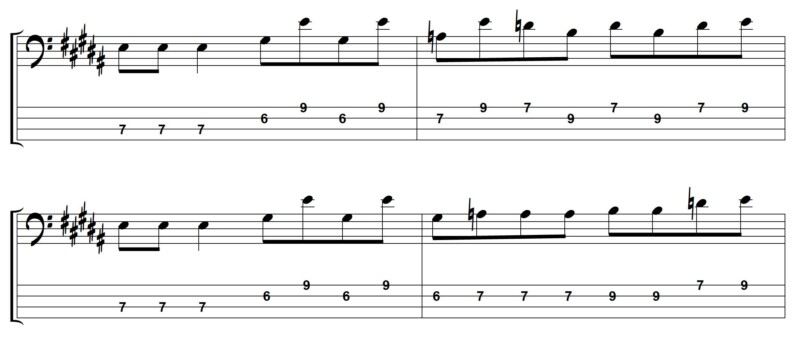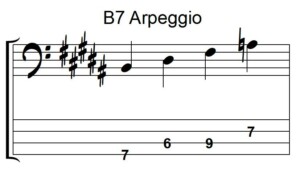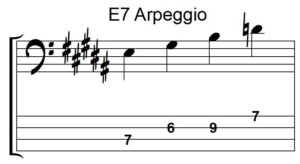Pump It Up – Elvis Costello (Bruce Thomas)
Pump It Up by Elvis Costello and The Attractions has an incredibly catchy bass line we all know and love. Bruce Thomas is a fantastic and highly underrated bass player. His lines with The Attractions were always melodic, interesting and, in the case of Pump It Up, very funky indeed.
In this lesson we’ll look at the main riffs from Pump It Up and the theory behind the notes. These riffs are a classic example of how we can work around basic chord tones in creating a memorable and catchy riff.
Pump It Up Main Riffs
The first riff is one of the ones you’ll all know, it starts on an F# even though the Key is B Major. It moves between three chords, so it’s worthwhile learning the line and just moving it around the neck. Be sure to accent the first two notes each time around the riff as indicated on the notation below.
This riff is played four times before we walk up to the B using the following notes: F#, G#, A, A# and B. This is a very common lead into a chord found in many songs.
Riff #1

Riff #2
This is where the vocals come in and it’s pretty much the same as riff 1, but instead of just playing it around the 2nd fret of the A string, Bruce actually shifts the whole riff up around fret 7 on the E string. This keeps the tone more consistent and help lead into the next section.

Chorus Riff
Then we move into the very funky and busy chorus riff on E. There’s almost a pedal section in the middle, followed by a pentatonic-like turn around. Getting this part up to speed can be tricky, so take your time getting the fingering right.
This line is then repeated with a variation on bar 4 as indicated below. Putting these two together can be a challenge, so practice them both in isolation before bringing them together and building up the tempo.

Practice Tracks
Verse
Chorus
Chord Tones and Scales Reference
These lines work around the chord tones and a mixolydian scale pattern, if you’ve every wondered how to make use of the modes then this bass line is a great example of how to the mixolydian mode, the 5th mode of the Major scale.
Below is an outline of the chord tones of the B7 chord; the 1st, 3rd, 5th and 7th. Aiming of the chord tones of a given chord, is a surefire way to creating a melodic bass line.

The most commonly used scale for playing over a Dominant 7 chord is the mixolydian mode, as this highlights the Major 3rd and flattened 7th scale degrees. It’s just like a Major scale, but with a flattened 7th.

Below is an outline of the chord tones of the E7 chord; the 1st, 3rd, 5th and 7th.

As before, the mixolydian mode is used again over the E Dominant 7 chord as shown below.














Great lesson, Mark – I love that you explain how it’s constructed as well. Looking forward to seeing what other songs you have in the pipeline!